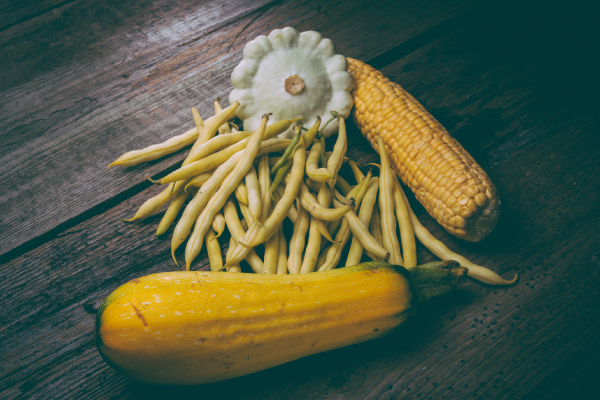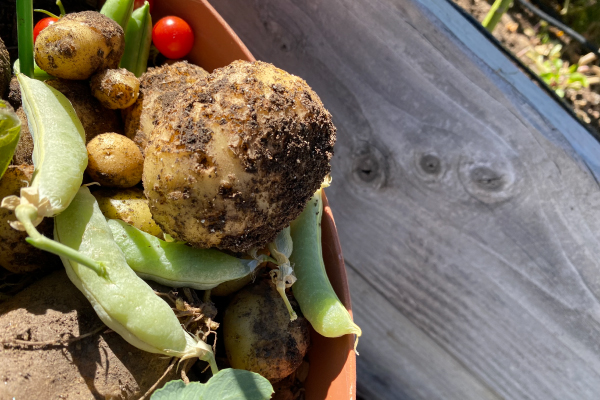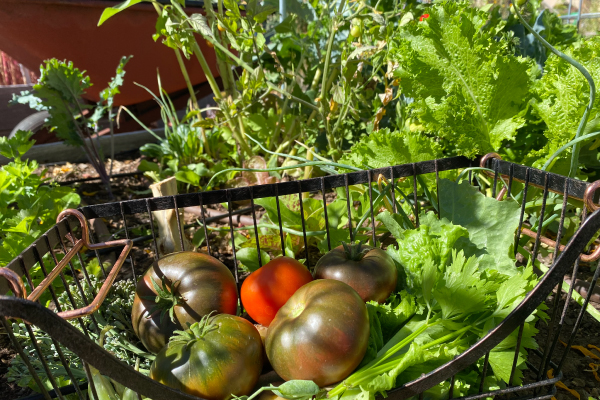Thanksgiving has passed, which could mean a few things for you. I hope you had a joyous time full of family and friends, food, and the activities you enjoy. The completion of a holiday can be bittersweet with relief that house guests have departed, yet the house feels quiet and lonely and it’s time to reflect on the past.
The one thing that binds us all to Thanksgiving is gratitude. There’s an endless list of things to be thankful for, but at the end of the day, it is the simple pleasures of warmth, food and community that bring us true happiness and fulfilment

Thanksgiving is a time where family and friends gather to be especially grateful for the meal they share together. On your dinner table, there were probably staples such as roasted butternut squash, green beans, corn on the cob, or my personal favorite, corn bread! Beyond being delicious, these foods deserve greater appreciation due to their scientific spectacular and rich history.
These Thanksgiving staples, squash, corn and beans, are known as the Three Sisters in companion planting. This technique is accredited to The Iroquois or Haudenosaunee, of the Northeast. For those of us without a green-thumb, companion planting is a technique where different plants are specifically grown next to each other because of their symbiotic benefits. Sister Corn is planted first so that it can grow tall and strong enough to create a support trellis for Sister Bean’s viny tendrils. Sister Bean is planted second and climbs up the corn so it can provide support during high winds. The higher elevation away from the squash also means that the plants won’t compete with each other for resources. Most importantly, beans use their rhizobia to chemically fix nitrogen, an essential growth element, from the air into a usable state in the soil. This nitrogen fixation benefits all of the crops. Sister Squash is planted third as its large leaves create shade and moisture and deters weeds and insects.

These crops help one another just as much as they help people that rely on the crops. Together, squash, corn and beans contain all nine essential amino, complex carbohydrates, and fatty acids. When planted together, corn has more protein, squash develops more vitamin A, and they are more resistant to natural elements, producing a higher yield compared to monocultures of these crops.
We owe thanks for this incredible farming technique to the genius of Indigenous Peoples! Here in Eagle County, the Ute Nation and People had the most intimate knowledge of the natural world. These fundamental ingredients of squash, corn and beans have significant importance in Native and Indigenous culture. These crops have strong connections to longstanding tradition, history and culture in the preparation of a wide variety of foods made by tribes across North America.
Indigenous People’s culture and tradition is centered around gratitude to the Earth for all it provides, which includes animals, plants, soil, weather patterns, climate, sky and humans. Our connection to our food is where all of these elements come together to bring us the energy to thrive. Earth gives us nourishment, protection, beauty and tasty treats! For every meal, every ingredient, there is a story to tell and a growth process to be amazed by. It is these discoveries into the foods in our lives that allow us to feel more gratitude, happiness, and fulfillment. Having one special day a year to show thanks simply is not enough. We ought to make an effort every single day to feel gratitude for the simple pleasures of life and we can start with our food.
With time and close observation, we are able to uncover secrets and appreciate our connection to the universe. Next time you look at a pine cone, your hands, a sunflower, tree branches, or gaze into the night sky, remember Fibonacci and the magic of math in nature.
Resources
https://www.nativeseeds.org/blogs/blog-news/how-to-grow-a-three-sisters-garden
https://www.agfoundation.org/news/the-three-sisters
https://en.wikipedia.org/wiki/Three_Sisters_(agriculture)
https://www.farmproject.org/blog/2016/3/31/growing-native-american-heritage-the-three-sisters
https://ccia.colorado.gov/sites/ccia/files/documents/Ute%20Unit%20Resource%20Pages.pdf
Tayler Branson is a Naturalist at Walking Mountains Science Center. You can find her giving a nature walk at WMSC to show Fibonacci in pine cones.









